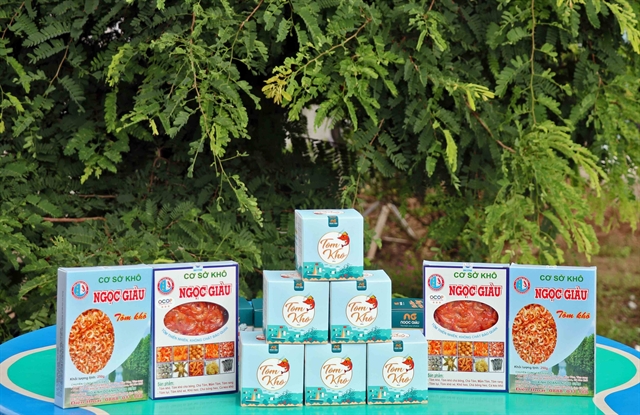 Life & Style
Life & Style

 |
| Cà Mau Province is seeking national intangible cultural heritage status for the craft of making dried shrimp. — VNA/VNS Photo |
CÀ MAU — The craft of making dried shrimp has been proposed by the southern province of Cà Mau to be recognised as a national intangible cultural heritage.
If recognised, this will be the fifth intangible cultural heritage of the province, after Đờn ca tài tử (traditional music of southern Việt Nam), gác kèo ong (luring bees to build nests on sloping wooden poles and cultivation of honey bees in the wild), muối ba khía (the making of three-striped crab sauce) in Rạch Gốc and nghệ thuật nhạc trống lớn (a traditional drum performance).
According to Director of the Cà Mau Province's Department of Culture, Sports and Tourism Trần Hiếu Hùng, the department has submitted the necessary documents to the Ministry of Culture, Sports and Tourism to consider the recognition of “the making of Cà Mau dried shrimp” as a national intangible cultural heritage.
Hùng said that dried shrimp is one of the famous specialties that is known by many locals and foreigners.
 |
| After being boiled, shrimp are put under the sun to have their shell dried. — Photo tuoitre.vn |
The making of dried shrimp has created jobs for thousands of local workers and supplied tens of tons of dried shrimp to the market each year.
This profession, according to many locals in Cà Mau, has been around for many years. Dried shrimps are mainly made from shrimp living in the natural river environment or those exploited from the sea.
"My grandfather used to make dried shrimp and the occupation is now passed down to the next generation. With the countless amount of shrimp, we did not know what to do except drying them and it was a difficult task without high revenue,” said Hồng Chí Tâm, owner of a shrimp production facility in Ngọc Hiển District.
“Although the amount of dried shrimp is now less, it can be sold at a good price. Especially with the support of machinery and greenhouses, shrimp can be dried all year round, regardless of rainy weather,” he added.
While most of the province's Mau dried shrimps are produced via traditional steps including boiling and drying in natural sunlight, among others, some large-scale production facilities have started to apply industrial processing technology to dry shrimp to ensure food safety and hygiene, reduce costs, and achieve higher efficiency than traditional methods.
“The making of dried shrimp is challenging as we are required to get up from 3am to boil shrimp in time to dry it in the early morning sun, then break the shell, remove the head and filter the size,” Hồ Thị Mỹ from Cái Nước District said, emphasising that Cà Mau dried shrimp has been known for its quality and high price.
“If the making of dried shrimp is recognised as an intangible cultural heritage, the value of dried shrimp will certainly increase while those who work in the industry will have a better life,” Mỹ said.
“I will be more motivated to stick with the profession,” she added. — VNS




